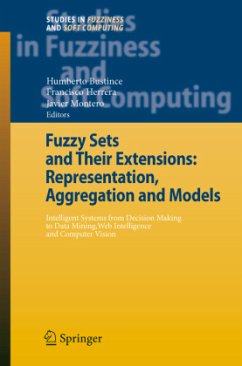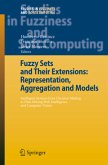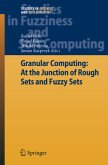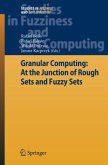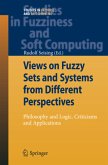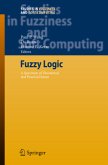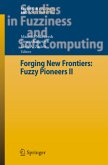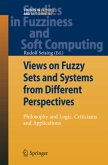This carefully edited book presents an up-to-date state of current research in the use of fuzzy sets and their extensions. It pays particular attention to foundation issues and to their application to four important areas where fuzzy sets are seen to be an important tool for modeling and solving problems. The book's 34 chapters deal with the subject with clarity and effectiveness. They include four review papers introducing some non-standard representations
Fuzzy Sets and Their Extensions: Representation, Aggregation and Models Intelligent Systems from Decision Making to Data Mining, Web Intelligence and Computer Vision Fuzzy sets are now more than 40 years old, and have come of age. However, the development of fuzzy set theory at the theoretical level, and its successful appli- tions to science and technology have often run in isolation. Only a little part of the theoretical apparatus was effectively used in past applications. The most prominent ones, namely fuzzy rule-based modeling and control engineering, were directly - spired from a seminal paper by Lot? Zadeh in 1973, suggesting how to use expert knowledge for synthetizing control laws, and from the ?rst experiments published by Abe Mamdani. Later in the eighties, when spectacular applications were bl- soming in Japan, fuzzy rule-based systems were systematized and simpli?ed by Michio Sugeno and colleagues, and became a basic approach to non-linear system modeling and control, soon hybridized with neural networks in the nineties. Thus fuzzy systems signi?cantly contributed to the raise of computational intelligence, and a lot of learning techniques for the construction of (supposedly interpretable) fuzzy models from data were developed under the ?ag of soft computing. Even if this area was quite successful, it is patent that the role, in the success of fuzzy logic, of new fuzzy set-related concepts developed quite at the same time in themathematicalnicheofthefuzzyset communitywaslimited.
Fuzzy Sets and Their Extensions: Representation, Aggregation and Models Intelligent Systems from Decision Making to Data Mining, Web Intelligence and Computer Vision Fuzzy sets are now more than 40 years old, and have come of age. However, the development of fuzzy set theory at the theoretical level, and its successful appli- tions to science and technology have often run in isolation. Only a little part of the theoretical apparatus was effectively used in past applications. The most prominent ones, namely fuzzy rule-based modeling and control engineering, were directly - spired from a seminal paper by Lot? Zadeh in 1973, suggesting how to use expert knowledge for synthetizing control laws, and from the ?rst experiments published by Abe Mamdani. Later in the eighties, when spectacular applications were bl- soming in Japan, fuzzy rule-based systems were systematized and simpli?ed by Michio Sugeno and colleagues, and became a basic approach to non-linear system modeling and control, soon hybridized with neural networks in the nineties. Thus fuzzy systems signi?cantly contributed to the raise of computational intelligence, and a lot of learning techniques for the construction of (supposedly interpretable) fuzzy models from data were developed under the ?ag of soft computing. Even if this area was quite successful, it is patent that the role, in the success of fuzzy logic, of new fuzzy set-related concepts developed quite at the same time in themathematicalnicheofthefuzzyset communitywaslimited.

